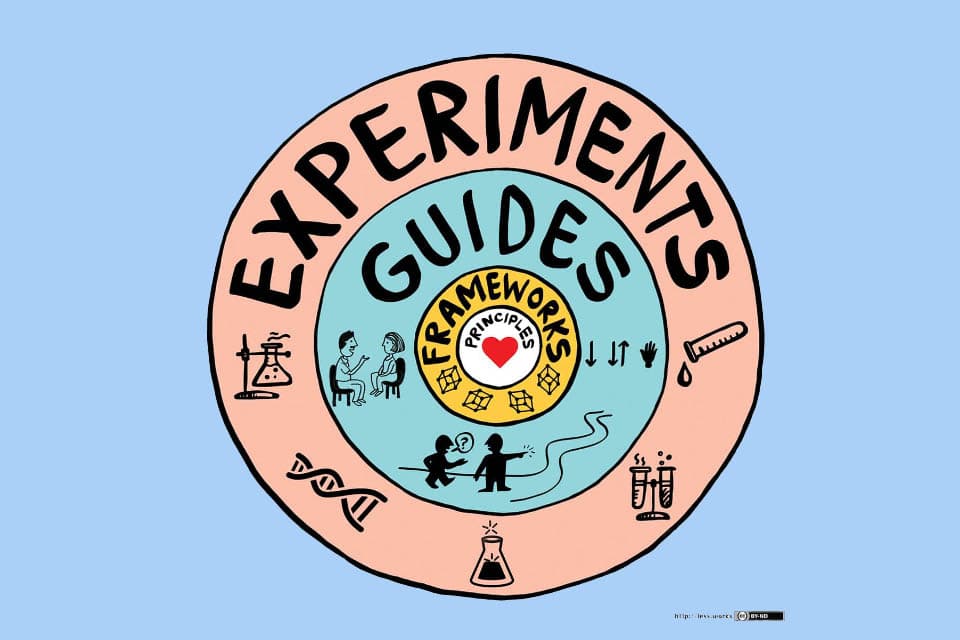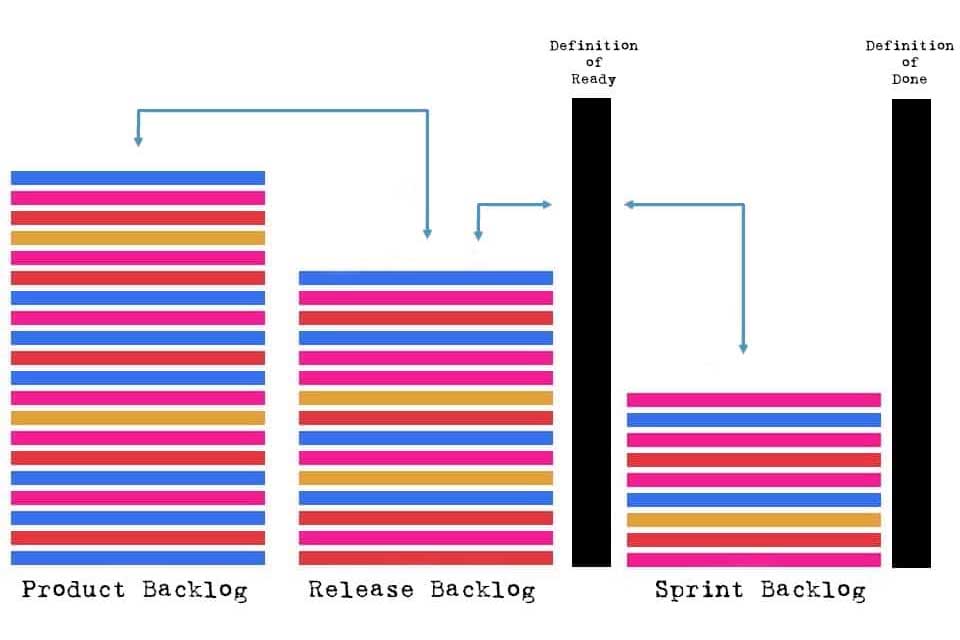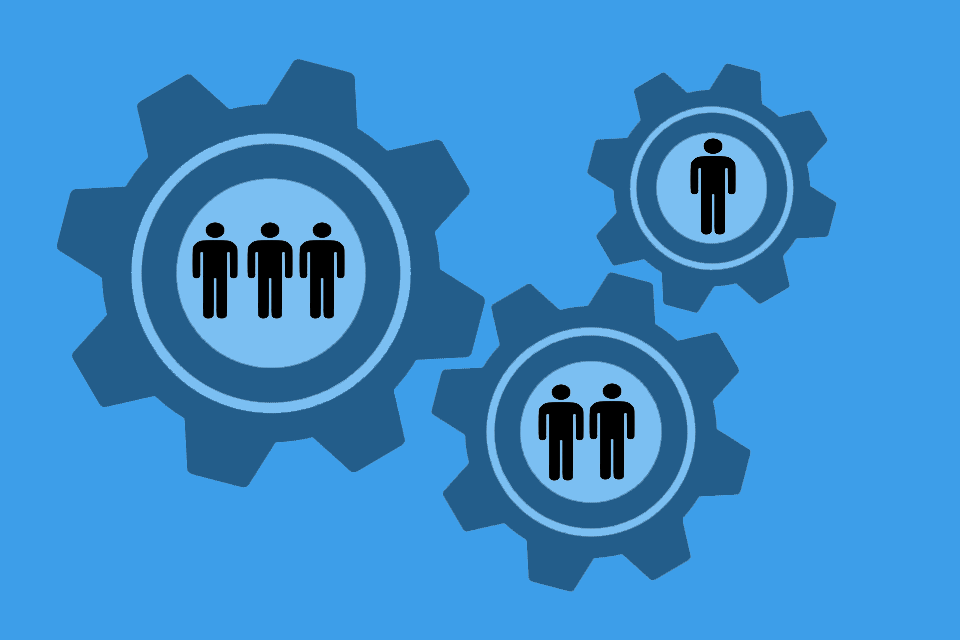What is Scrum?
Table of Contents: Definition – Rules of the Game – Advantages – Questions from Practice – Download – Notes
Smartpedia: Scrum is a framework with events, accountabilities and artefacts for the iterative development of complex products and services.
Scrum – a flexible framework for complex projects and developments
Scrum is a framework for the step-by-step planning and realisation of products and services. It helps companies when developments at the beginning of a project are too complex for exact planning, requirements or priorities change, customers need quick added value or risks have to be minimised.
Originally conceived for software development¹, Scrum has been used for many years in project management and product development in various fields and industries.
It defines an incremental, iterative procedure with events, accountabilities and artefacts, and is based on empiricism (knowledge arises from experience and decisions are made on the basis of observation) and Lean Thinking (waste is avoided and the focus is on the essential).
How does Scrum work?
The framework and its “rules of the game” are defined in the Scrum Guide. In its current version, published in November 2020, the guide lists
- five events,
- three accountabilities and
- three artefacts.
The events include
The heart of the framework is the so-called Sprint. It includes all other events. It is an iteration of constant duration with similar actions.
Sprint Planning is the first event within the sprint. In Planning, it is determined “why” the current Sprint has a value, “what” is transferred from the Product Backlog to the Sprint Backlog and “how” it is realised. For each Sprint, the participants agree on a concrete Sprint Goal.
The Daily Scrum is a daily event for synchronisation, to check progress and, if necessary, to agree on adjustments. The Sprint Review is a meeting at the end of a sprint to present the development results and determine future adjustments. And the retrospective is a meeting to reflect on processes and procedures, tools, skills, relationships, teamwork, general and specific challenges and experiences.
Three accountabilities are defined:
In Scrum, the team – equipped with the required competences – organises itself within fixed periods of time – the timeboxes – committing to deliver finished functionality regularly and as early as possible.
Instead of roles, the guide speaks of so-called accountabilities.² The idea behind this is that every person who actively participates in a development or a project takes responsibility for specific areas, the implementation of tasks, the adherence to commitments, the culture of cooperation and the results! And since this takes place in close cooperation, Scrum as a name also makes sense; the term comes from the sport of rugby and describes a situation in which a phase of the game is restarted on command.
In addition to the events and accountabilities, there are three artefacts:
The artefacts represent tasks or items and their realisation.
A Product Backlog contains elements with which a Product Goal defined by the Product Owner is achieved. The Sprint Backlog is the plan for the current Sprint and contains all Product Backlog items that are selected by the Developers for the current Sprint and implemented in the Sprint. The aim is to create an Increment on the way to the Product Goal that delivers a value, is functional and potentially deliverable, and thus corresponds to an agreed Definition of Done.
And so the sequence of events, the interaction of accountabilities and the work with the Artefacts starts all over again. The end of a Sprint marks the beginning of the next Sprint.
Advantages of Scrum
Because predictions and the creation of realistic plans are often difficult when developing software and systems, Scrum turns the approach around: knowledge comes from experience and experience comes from the course of a development. In combination with the iterative approach, the commitment of the team to the sprint goal and the early detection of obstacles (the so-called impediments), the predictability increases and the development risk decreases.
In summary, Scrum offers the following advantages:
- Simple set of roles, activities and artefacts; easy to understand and use.
- High flexibility in working, yet clear rules and principles.
- Concentrated communication between the accountabilities.
- Short feedback cycles.
- Integration of stakeholders easily possible, e.g. in the Sprint Review or in the run-up to Sprint Planning.
- Transparency of work steps and intermediate results.
- The ability to identify and correct deviations.
- The ability to adjust the existing process in the current project.
Questions in the context of Scrum
Here you will find some questions and answers in the context of the framework:
Is Scrum an abbreviation or an acronym?
Scrum is not an abbreviation or an acronym. (The spelling SCRUM is therefore also incorrect.) The term originates from the sport of rugby, and refers to a “scrum”, also a game situation, in which a phase of the game is restarted on command. Hirotaka Takeuchi and Ikujirō Nonaka first used the term in 1986 in Product Development: The New New Product Development Game, writing:
“In today’s fast-paced, fiercely competitive world of commercial new product development, speed and flexibility are essential. Companies are increasingly realizing that the old, sequential approach to developing new products simply won’t get the job done. Instead, companies in Japan and the United States are using a holistic method—as in rugby, the ball gets passed within the team as it moves as a unit up the field.
This holistic approach has six characteristics: built-in instability, self-organizing project teams, overlapping development phases, “multilearning,” subtle control, and organizational transfer of learning. The six pieces fit together like a jigsaw puzzle, forming a fast flexible process for new product development. Just as important, the new approach can act as a change agent: it is a vehicle for introducing creative, market-driven ideas and processes into an old, rigid organization.”
What are Scrum values?
The following Scrum values exist:
- Commitment
- Courage
- Openness
- Focus
- Respect
The commitment of the team to achieve the agreed sprint goal, the commitment to quality, learning and doing the best together is essential to working together and building an agile culture.
Courage is important for the success of the team because it is about trying new things, admitting mistakes, asking for help when needed, saying “no” to some demands and challenging the status quo if necessary.
Openness is the basis for a learning culture, for feedback and new ideas. Openness as a value enables informed decisions, increases efficiency and builds trust.
Focus helps the team to concentrate on the important things – for example, with tools such as timeboxing, definition of ready or definition of done. In addition, the Scrum Mast tries to keep disruptive influences away from the developers and the product owner does not influence how developers realise user stories, for example.
Respect as a value is essential for the cooperation between the participants. The ideas, views and achievements of others must be respected. Respect is a central building block for successful and productive development.
Here you can find more information on how the values interact in concrete application.
How does Scrum change the speed of development?
The book Scrum – The Art of Doing Twice the Work in Half the Time is often cited when talking about speed. Twice the work in half the time? Sounds good, doesn’t it? Moreover, since terms like sprint are borrowed from athletics and velocity is another word for speed, it is little surprise that agile methods are often sold on a speed advantage. André Claaßen therefore speaks of an agile speed lie. And Stefan Wolpers calls for “The Art of Doing Twice the #Value in Half the Time“.
And is Scrum faster than alternative approaches? If it is possible to work calmly and continuously with each other at a constant speed, to integrate feedback at an early stage and thus consistently avoid undesirable developments, then rework, adjustments or time-consuming bug fixes are avoided, and this also increases the overall speed of development.
What are the challenges of introducing Scrum?
The Scrum Guide is short and clear, the framework easy to understand – are there any challenges at all with the introduction or application?
Yes, quite a few:
- Does the new procedure fit the organisation and the projects at all?
- How can the approach be established if it is imposed “from above”?
- How do career paths change when there are only three responsibilities?
- How does the individual visibility of individual employees change when the team becomes the focus?
- How does individual goal setting change when teamwork becomes a central component?
- How is customer feedback integrated into the approach?
- How does the management of the organisation change with the help of key figures?
- What happens if success is not achieved in the short term?
- What role do tools actually play in the application?
This list can easily be extended. It’s a good thing that Heiko Bartlog has written a great series of articles on Agility? We tried it! Does not work! in which he takes up these and many other points and provides impulses on what organisations can do to get the best out of the framework.
Which role is most important in Scrum?
There is no hierarchy of roles; it is explicitly stated in the Scrum Guide:
“The Scrum Team is responsible for all product-related activities from stakeholder collaboration, verification, maintenance, operation, experimentation, research and development, and anything else that might be required….
The entire Scrum Team is accountable for creating a valuable, useful Increment every Sprint”.
Of course, individual tasks are assigned to the participants, but there is a joint responsibility for implementation and results. Ergo: No role is more important than another.
Which event is the most important?
Similar to the roles and accountabilities, there is no one event that is more important than the others. The sprint is considered the heart of Scrum, because all the others take place within this event:
- Sprint Planning takes place at the beginning of the Sprint by discussing the why, the what and the how.
- The Daily Scrum is the daily standup meeting where developers meet to synchronise and share progress, upcoming activities and potential problems.
- The Sprint Review is an event at the end of a Sprint to inspect the completed work in relation to the set Sprint goal and to discuss future adjustments.
- And the Retrospective takes place at the end of the Sprint to review the recent past – i.e. the past Sprint – and thereby improve future collaboration within the team.
All events have their meaning and purpose; each event would be missing if it did not take place. Ergo: There is no hierarchy of events.
What is the significance of the Agile Manifesto for Scrum?
Agile software development with its prominent representatives such as Scrum or Extreme Programming is based on a foundation of values that were published in 2001 as the “Manifesto for Agile Software Development” – in short: Agile Manifesto.
It was written with the following claim: “We find better ways to develop software by doing it ourselves and helping others to do it. Through this activity we have come to appreciate these values:”
Apart from the fact that Scrum is nowadays basically used for the development of complex products or services (and thus not only for software development), the four values and 12 principles of the Agile Manifesto form the basis for the framework and therefore have great significance for its application in practice.
Kai-Marian Pukall has published an interesting article on Modern Agile Principles: Agile work made easy.
What Scrum (and agile) certifications exist?
There are many organisations that offer different certifications for Scrum and/or agile. The two best-known organisations are likely to be the Scrum Alliance and Scrum.org. Felix Stein has already compiled a whopping 240 agile certifications from 39 different organisations at the end of 2020. It is very likely that there are considerably more nowadays, as many organisations have realised that there is good money to be made from certifications.
However, it would be a mistake to assume that just having a certificate is enough to have a good command of the framework or the tasks and activities of the various responsibilities. In reality, it is similar to a driving licence: it entitles the holder to drive a vehicle, but he or she can only really drive a car well many years later and only if he or she drives, drives and drives very regularly.
Do you think the Scrum Guide defines too many or too few rules? And what would be the advantage if it defined more or less?
Notes:
[1] the framework was first introduced in 1995 at the OOPSLA conference in Austin, Texas by Jeffrey Victor “Jeff” Sutherland and Ken Schwaber. However, Scrum as a term was mentioned as early as 1986 in a paper by Ikujirō Nonaka and Hirotaka Takeuchi; the two recognised that in the development of complex products, the best results are achieved when small, self-organised teams set themselves goals.
[2] Here you can find more information on the topic of accountability versus role. If you read the term Scrum role in publications, then you know that it must be a somewhat older text, because since November 2020 it is no longer used in the description of the framework.
The SCRUM method is written about in numerous publications, but it is neither an acronym nor a method. It is a framework that names events, responsibilities and artefacts, but does not describe, for example, how a product, software or service is to be developed.
Are you interested in German podcasts about the framework? Please check out Scrum meistern.
If you like the article or would like to discuss it, please feel free to share it in your network. And if you have any comments, please do not hesitate to send us a message.
And here you will find additional information from our Smartpedia section:




